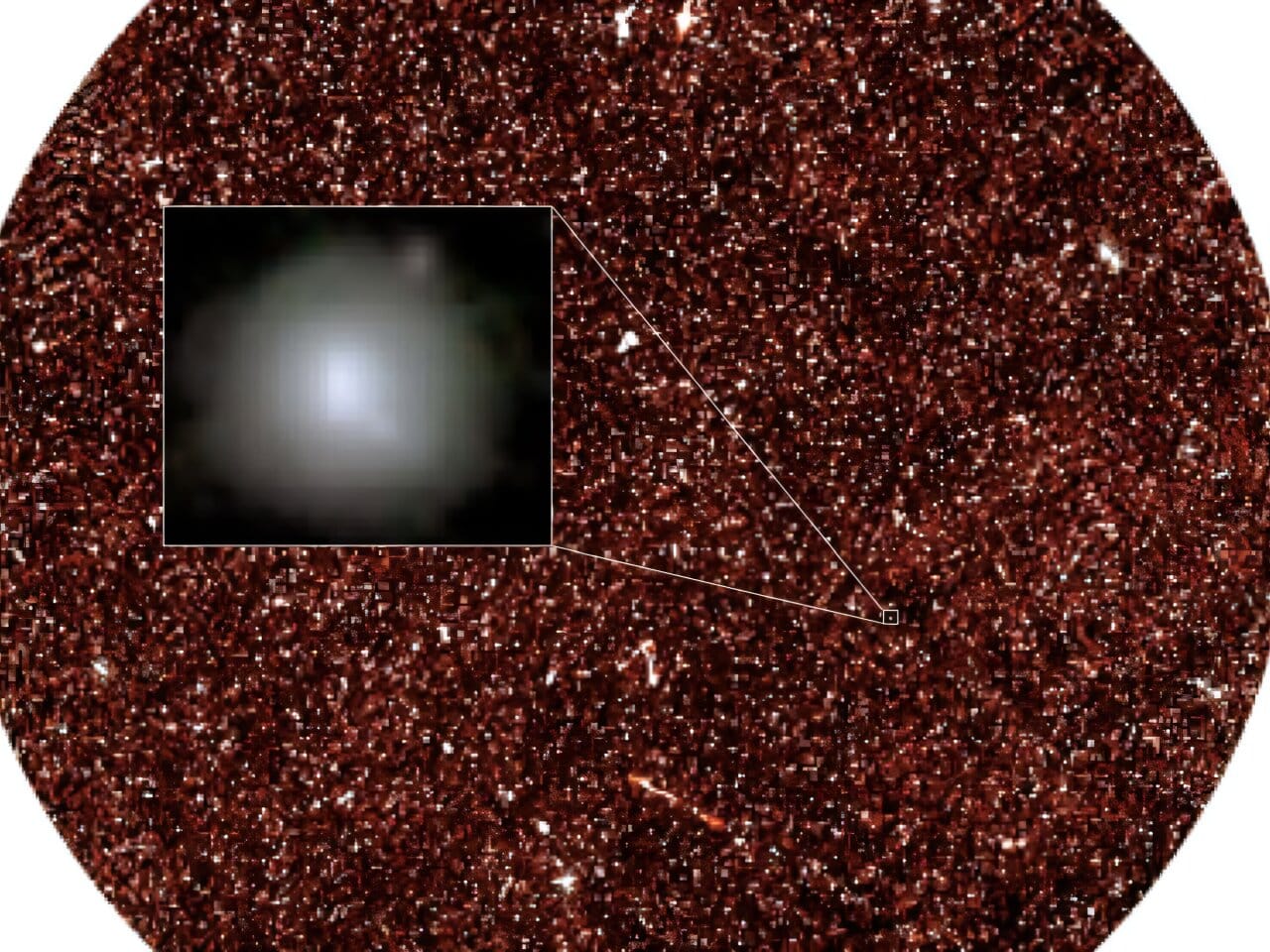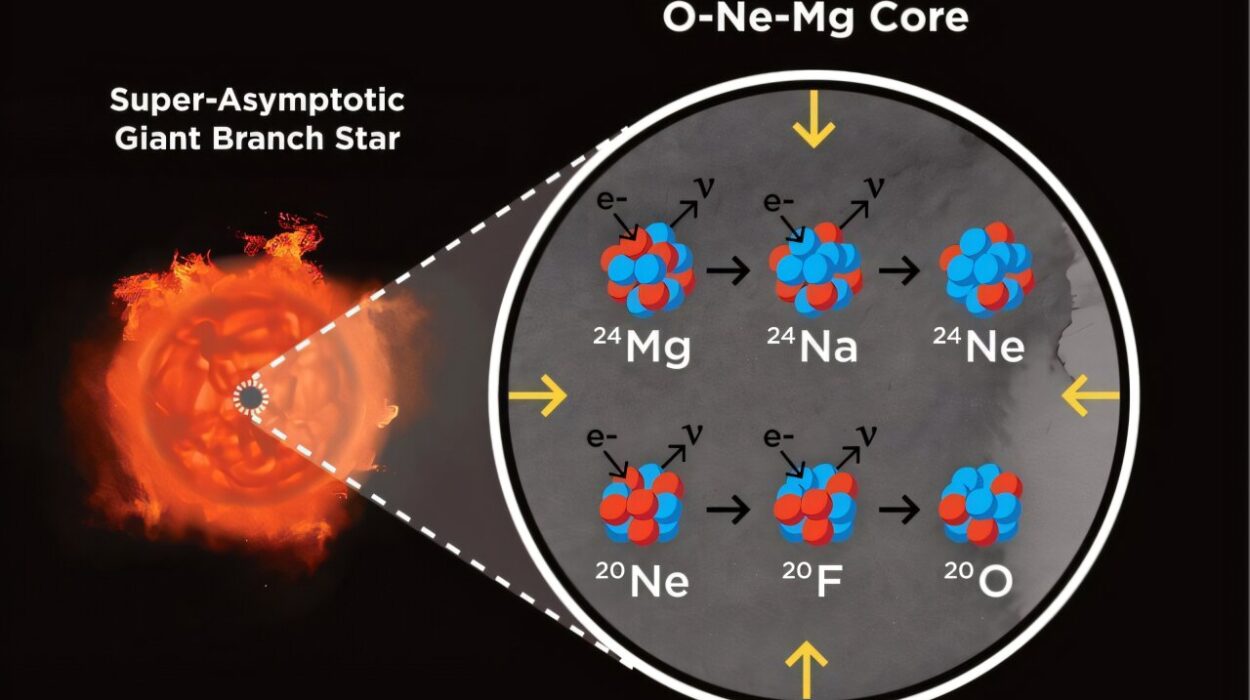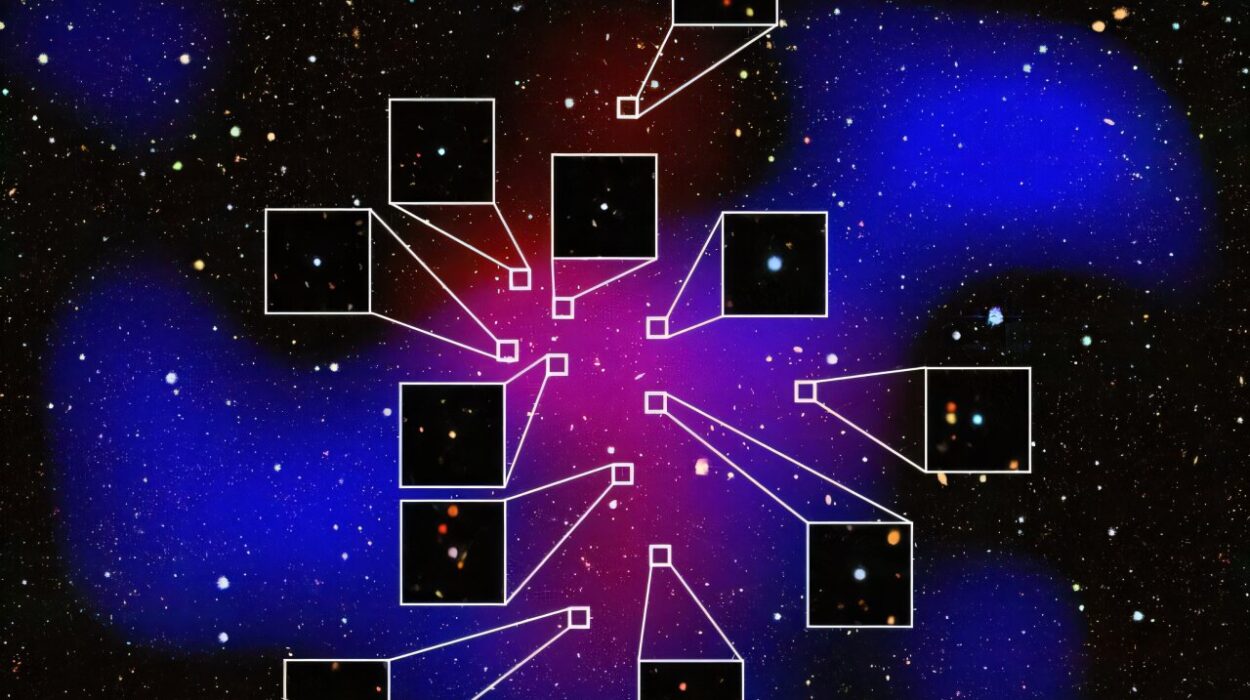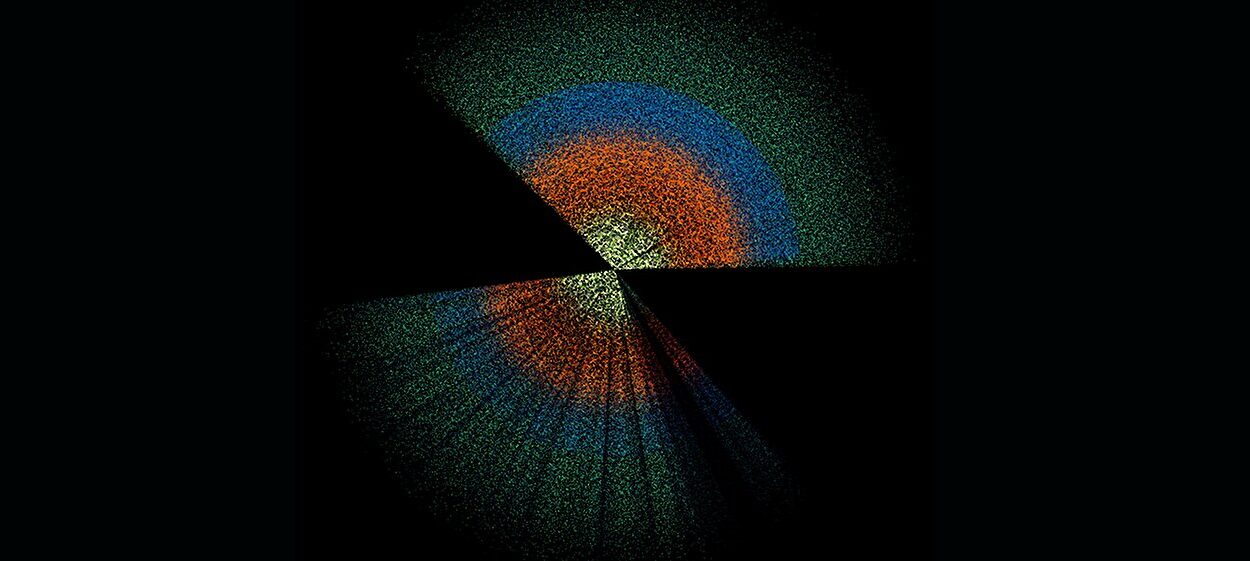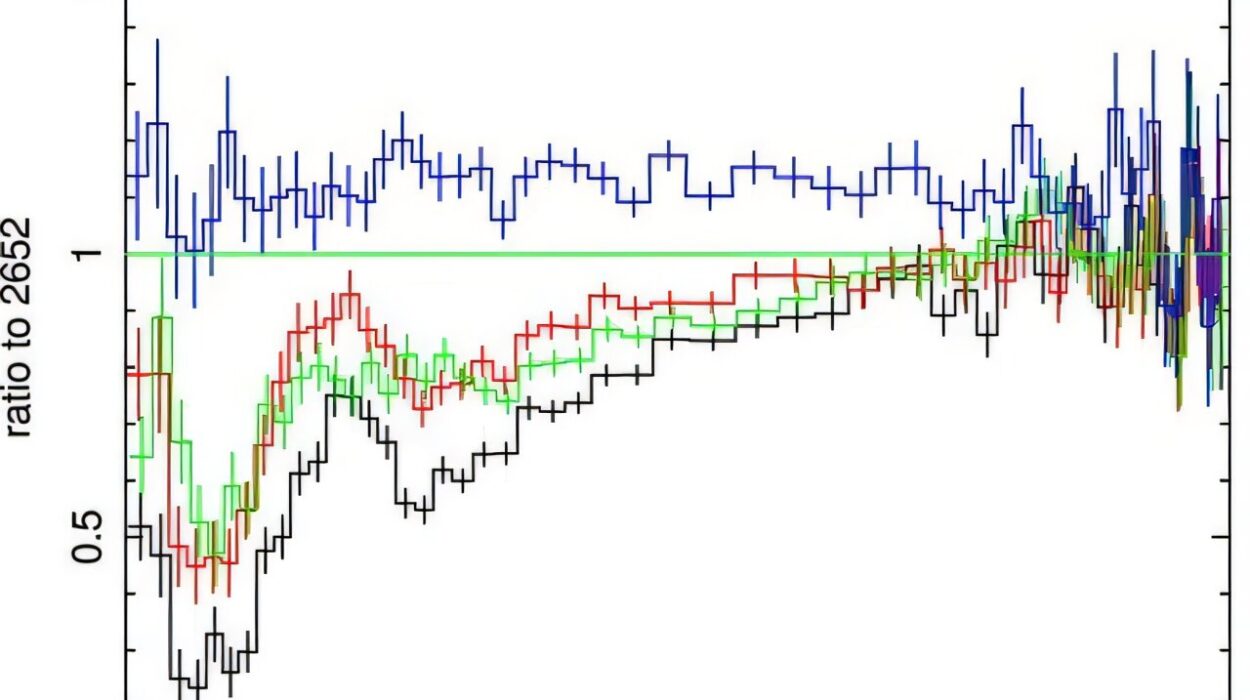More than 11 billion years ago, when the universe was only about two billion years old, something extraordinary was happening. Galaxies across the cosmos were alive with energy, growing at astonishing rates, and giving birth to stars at a pace the universe has never matched since. Astronomers call this era the Cosmic Noon, a golden age of galactic growth.
During this time, galaxies were forming stars 10 to 100 times faster than galaxies today. They were colliding and merging with one another, feeding on streams of gas, and building up their vast dark matter halos. Cosmic Noon represents a turning point in the history of the universe, when galaxies grew into the magnificent structures we see today.
Yet, much of this remarkable story is hidden from us by something surprisingly ordinary: cosmic dust.
Dust: The Cosmic Obscurer
Dust may seem insignificant on Earth, but in space it plays a powerful role. Within galaxies, tiny grains of carbon, silicates, and other elements swirl between stars, absorbing and scattering visible light. This dust blocks our telescopes from clearly observing the blazing star formation at Cosmic Noon.
When astronomers peer into deep space using visible light, much of the picture is missing—like trying to watch a fireworks display through a thick fog. For decades, this cosmic dust limited our understanding of how galaxies truly lived and evolved during their most active years.
But dust does not stop all kinds of light.
Radio Waves: The Great Revealer
Unlike visible light, radio waves can pass almost unhindered through dust. Their long wavelengths cut through the obscuring fog, allowing astronomers to peer into the hidden hearts of galaxies. Radio observations are, therefore, one of our best tools for unlocking the secrets of the Cosmic Noon.
Recently, a team of international researchers turned to some of the world’s most powerful radio observatories—the MeerKAT telescope in South Africa, the Very Large Array (VLA) in the United States, and the Giant Metrewave Radio Telescope (GMRT) in India. They studied the faint radio glow of 160 galaxies from the Cosmic Noon, tracing how these galaxies lived, evolved, and fueled their furious star formation.
Their findings, published in The Astrophysical Journal, shed new light on one of the most mysterious eras in cosmic history.
Decoding the Radio Fingerprints of Galaxies
Every galaxy broadcasts a unique “radio fingerprint” called a radio spectral energy distribution (SED). This fingerprint is a mix of signals produced by different processes: the heat of young stars, the radiation of dust, and the energetic spirals of cosmic rays moving through magnetic fields.
By carefully analyzing these fingerprints, astronomers can reconstruct how galaxies formed stars, how strong their magnetic fields were, and even how cosmic rays behaved billions of years ago.
As lead researcher Professor Fatemeh Tabatabaei explains, “Studying the radio spectral energy distribution of distant galaxies is essential for understanding their assembly and evolution over cosmic time.”
And indeed, the fingerprints of galaxies at Cosmic Noon tell a dramatic story.
Cosmic Rays and Turbulent Magnetic Fields
One of the most surprising results came from studying cosmic rays—high-energy particles that zip through space at nearly the speed of light. These particles emit a type of radiation called synchrotron radiation as they spiral along magnetic fields.
The researchers measured the synchrotron spectral index, which reveals the balance between high-energy and low-energy electrons. They found that at Cosmic Noon, the index was unusually “flat”—meaning that galaxies were producing far more high-energy electrons than expected.
This suggests that galaxies in the early universe were turbulent, chaotic places, with tangled magnetic fields acting like cosmic accelerators. These turbulent fields boosted cosmic rays to extreme energies, filling galaxies with invisible halos of high-energy particles.
In essence, galaxies at Cosmic Noon weren’t just birthing stars—they were roaring engines of cosmic radiation.
Dust, Light, and Hidden Truths
Another remarkable finding is that traditional methods of measuring galactic star formation—like looking at infrared light—can sometimes mislead us. Dust absorbs visible and ultraviolet starlight, re-emitting it as infrared radiation. Astronomers often use this infrared glow to estimate star formation.
But the new research shows that radio observations provide an even more reliable tracer, especially at high redshifts. Unlike dust-biased light, radio signals reveal the true scale of galactic growth. Even more fascinating, the team found that the infrared–radio correlation (IRRC), a well-known relationship between a galaxy’s infrared and radio emissions, stayed constant even as galaxies evolved. This constancy may be explained by the presence of those turbulent cosmic-ray halos.
In other words, galaxies may cloak their star formation in dust, but radio waves still whisper the truth.
A Window Into the Future of Astronomy
These discoveries come at an exciting moment in astronomy. The MeerKAT telescope that provided much of the data is itself a precursor to the Square Kilometre Array (SKA), a colossal next-generation radio observatory under construction in South Africa and Australia. When complete, the SKA will be the largest radio telescope in history, capable of mapping billions of galaxies across cosmic time.
The current study of 160 galaxies is just the beginning. With SKA’s immense power, astronomers will probe millions of galaxies at Cosmic Noon and beyond, tracing the rise and fall of galactic life on a scale never before possible.
As co-author Professor Russ Taylor noted, “The work presented in this paper will benefit from the upcoming deep and multifrequency SKA surveys, which will help to perform a more robust analysis in more complete samples.”
In short, radio astronomy is about to transform our picture of the universe, peeling back the dust and revealing the hidden engines of cosmic growth.
Why Cosmic Noon Matters
Understanding the Cosmic Noon is not simply an academic exercise. It is the story of how the universe we live in today came to be.
The stars that shine above us—the Sun included—are descendants of those that were born in that golden age. The galaxies that now form the cosmic web were sculpted during those turbulent years. Even the cosmic rays that streak through Earth’s atmosphere have roots in the fierce starbursts of ancient galaxies.
By studying Cosmic Noon, we are looking back at the adolescence of the cosmos, a time of chaos, creativity, and growth. It is the era that shaped the galaxies we see in the night sky, and by extension, the story of our own origins.
The Universe Beyond the Dust
At first glance, it may seem almost ironic that something as mundane as dust can obscure the grand story of the cosmos. But thanks to the ingenuity of astronomers and the power of radio waves, we are learning to see past the veil.
What emerges is a universe far more dynamic than we ever imagined—a universe where galaxies blaze with star formation, magnetic fields rage with turbulence, and cosmic rays dance through space like sparks from a fire.
The Cosmic Noon may have passed billions of years ago, but its echoes remain written in the radio whispers of galaxies. And as we tune in to those whispers, we uncover the true story of how galaxies—and perhaps life itself—came to be.
More information: Fatemeh Tabatabaei et al, The Radio Spectral Energy Distribution and Star Formation Calibration in MIGHTEE-COSMOS Highly Star-forming Galaxies at 1.5 < z < 3.5, The Astrophysical Journal (2025). DOI: 10.3847/1538-4357/ade233
